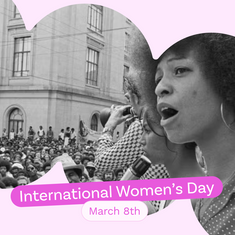
Our guide to fundraising, meaning financial support for charity, will help you plan the best online or in-person fundraiser for your cause.
The definition of fundraising is “the seeking of financial support for a charity, cause, or other enterprise.” It’s how we raise money for causes that are doing good in the world, whether that means saving the environment, funding research to cure diseases, or giving people money or supplies when they need it most.
Charitable giving has been a thing since ancient times. The word “philanthropy” (phil = love, anthro = man) first appeared in Aeschylus’ “Prometheus Bound” in 500 BCE. And Augustus, the first Roman emperor, gave public aid to around 200,000 people.
These days, famous leaders and philosophers aren’t the only ones giving. Everyone’s doing it!
According to the Giving USA Annual Report, in 2021:
- Americans give $484.85 billion USD, up 4% from 2020 — that’s around $1,471 per person!
- $326.86 billion USD came from individuals, representing about two-thirds of total giving
- Corporations gave $21.08 billion USD, 23.8% more than in 2020.
There are also online fundraising platforms, like Raisely, which has helped nonprofits and charitable organisations raise over $300 million AUD.
Despite its evolution, the answer to the question “what is fundraising?” has not changed. It has simply expanded. Nowadays, there are all types of fundraising campaigns nonprofits can start — both online and offline.
Let’s dive into each and their benefits:
Offline Fundraising Still Reigns Supreme
Offline fundraisers are fundraising efforts and events that don’t involve the internet. While we’re now accustomed to fundraising methods like crowdfunding, peer-to-peer, social media campaigns, and virtual webinars, offline donations are still going strong.
For example, during last year’s GivingTuesday, charities and nonprofits raised $2.7 billion USD. More than $1.7 billion USD was raised offline.
Benefits of Offline Fundraising
While the process of soliciting door-to-door is becoming obsolete, face-to-face interactions aren’t going anywhere.
Offline fundraising, meaning in-person events or real-life interactions to raise money for a cause, is still a major draw. Nonprofit fundraising relies heavily on relationships, and it’s easier to foster and grow those relationships in person. People don’t give to causes. People give to people.
Donors also tend to give major gifts in person. During 2021’s GivingTuesday, the average amount of money donated online was $190 USD per organisation. The average donation amount made offline was $709 USD.
Simply put, offline fundraisers are great for growing relationships, raising advocacy, and drawing larger donations.
But Things Are Changing
There’s a generational shift from offline to online fundraisers. While Baby Boomers are accustomed to in-person events, Millennials and Gen Z are more inclined to give online. As these younger generations build more wealth, you can expect online fundraising to become increasingly important.
How to Run Offline Fundraisers
If you want to run a special event offline, here are a few different types of fundraising to consider:
Direct Mail
Direct mail fundraising is basically a fundraising appeal you send via snail mail. It can be a fundraising letter, a postcard, or an item that’s relevant to your cause.
This type of fundraising can be effective when you’re targeting a specific audience, and you can easily track your response rate by including a QR code created specifically for your mailer. However, mailing costs can add up, so be sure to do the maths — if your results don't offset the costs, you may be better off trying some other fundraising ideas.
In-Person Fundraising Events
In-person fundraising, meaning events like bake sales, raffles, silent auctions, charity golf tournaments, and walk-a-thons, are as popular as they are versatile. Whatever the size of your nonprofit, there are countless fundraising activities you can organise to make an impact.
In-person fundraisers have many benefits. They can:
- Boost awareness
- Attract new donors
- Inspire major donors
- Strengthen individual donor relationships
- Encourage board member involvement
- Build mailing lists
- Help you obtain sponsorships
- Unite your community around a good cause
- Build partnerships with local businesses and current members
However, in-person events aren’t easy. They usually require a lot of time and effort, and there's no shortage of things to plan for. You'll need supplies, marketing materials, volunteers, gifts, goodie bags, an event space, T-shirts and other merch, and potentially much more.
At the end of the day, the money you raise may not justify all the hard work you put into your event.
Fortunately, many in-person events, like auctions and classes, can also be run online. All you have to do is get creative!
Online Fundraising Is Catching Up
Online giving allows for nonprofits to raise funds via the web. While offline fundraising still makes up the lion’s share of total giving, online donations show year-over-year growth. With the help of fundraising software, user-friendly apps, and the surge of mobile activity, online donations will continue to grow in popularity.
M+R Benchmarks reveals that in 2021:
- Total online revenue grew 3%
- Nonprofits increased their digital ad budgets by 19%
- 54% of nonprofit website traffic came from mobile devices
- 41% of all nonprofit website visits in 2021 came from organic traffic
- Ticket sales for nonprofit events increased from 5.5% of total online revenue in 2020 to 11.8% in 2021
Benefits of Online Fundraising
Online fundraising makes most steps in your fundraising strategy process simpler.
Online events also tend to be cheaper to put on. Unlike their in-person counterparts, you don’t have to worry about finding a physical space that accommodates dozens — if not hundreds — of people. You don’t have to hire a full staff of volunteers, worry about feeding people, or agonise about whether rain will postpone your event.
Instead, you can save money or use it to strategise ways to maximise your fundraising efforts.
How to Run Online Fundraisers
Even without a shared physical space, you can run all kinds of online fundraising events. You’ll have even more opportunities to attract potential donors, especially when you use a fundraising platform like Raisely.
Raisely’s built-in CRM makes it easier to attract new donors and manage existing ones. With it, you can send personalised email and SMS messages, organise your live segments, and much more.
Here are a few types of online fundraising options:
Fundraising Pages
No matter what type of event you’re organising, your fundraising page acts as a hub. It’s where you put all the fundraising campaign information everyone needs to know, including:
- Your cause and mission
- Where and when the fundraising event is taking place
- How donors and volunteers can get involved
- Where they can donate
- How the fundraising campaign is going
- What you should share with others
- Online fundraising store for merch, if you have one
And we’ve got great news: you don’t even have to make the page yourself. Raisely has already almost built your next campaign with a variety of professional templates. All of them are customisable, so you can add your logo, colour palette, and messaging, all for free!
Personalising your donation forms is just as easy, and you add all sorts of options, like donation suggestions and matching gifts, which bring in large sums of money for your cause.
Are you planning a type of fundraising event, in-person or online? Include an event registration form or use our ticketing feature right on your donation page. Organising a fundraising event has never been easier!
Peer-to-Peer Fundraising Campaigns
Social media can give even the smallest nonprofits an influential voice. In a peer-to-peer campaign, supporters of your cause elevate your voice by fundraising on your nonprofit’s behalf, amplifying your message. They do this by having their own individual donation pages, sharing your cause with their followers on all their favourite platforms, and telling their stories and what the nonprofit means to them.
There are multiple benefits to running a peer-to-peer campaign. Here are just a few:
- Acquire new donors: These campaigns turn your followers into brand ambassadors, who share your message with their followers. This can expand your reach exponentially, and help you attract new donors.
- Huge ROI potential: A well-thought-out peer-to-peer fundraising plan can lead to huge financial gains, especially when you give your brand ambassadors the tools and tactics they need to succeed.
- Improve donor retention: Well-run campaigns can energise your nonprofit’s most dedicated followers, and re-energise those who haven’t recently engaged with you.
- Flexibility: Peer-to-peer campaigns are about as versatile as many fundraising events themselves. You have many variables to work with, including timelines, challenges, event types, and more — all of which are customisable with Raisely.
Email Marketing Campaigns
Email marketing is an efficient way to communicate with many of your nonprofit’s followers all at once. In fact, email open rates for nonprofits are 26.6%, which is much higher than most other industries.
Email is also much cheaper than direct mail, and you can do a lot more with it, like include videos. When email marketing, you’ll also never have to set foot in a post office.
Raisely’s built-in CRM lets you create personalised messages so you can inform your followers of your next campaign, show them how your current campaign is going, and thank them for their contributions.
What Is Fundraising? Making the World a Better Place
Thousands of years since it first became a thing, the definition of fundraising hasn’t changed. However, some of our approaches have.
While in-person fundraising remains effective, online fundraising is changing how donors give and improving how you can engage with them.Are you ready to grow your cause and plan your next event? Check out Raisely’s all-in-one fundraising platform today!




